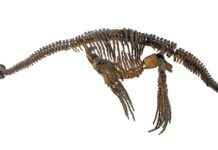Microsoft, one of the leading tech giants, has recently made waves in the quantum computing world with its groundbreaking announcement of the creation of the first ‘topological qubits’. These qubits are set to revolutionize the field of quantum computing by providing a more robust way of storing quantum information, making it easier to build quantum computers at scale.
The company revealed its Majorana 1 quantum chip, showcasing its progress in developing machines based on topology. This new approach is expected to offer better protection against noise, a common challenge in quantum computing. However, some researchers remain cautious about Microsoft’s claims, highlighting the need for more concrete evidence.
In a press release on February 19, Microsoft shared limited technical details about its achievement but disclosed some data to selected specialists at its research facility in Santa Barbara, California. Steven Simon, a theoretical physicist at the University of Oxford, expressed some skepticism but acknowledged that the results look promising.
The company also published preliminary results in Nature, detailing experiments on a superconducting ‘nanowire’ device made of indium arsenide. The goal is to host two topological states known as Majorana quasiparticles at each end of the device. While measurements suggest the presence of an extra electron in the nanowire, the authors caution that this does not guarantee the existence of Majorana quasiparticles.
Microsoft researcher Chetan Nayak revealed that the team conducted follow-up experiments involving paired nanowires in a superposition of two states. Despite these advancements, some researchers question the decision to announce the creation of a qubit without releasing detailed evidence. The company, however, emphasizes its commitment to open publication of research results while protecting intellectual property.
Looking ahead, Microsoft has shared its roadmap for scaling up its topological machines and demonstrating their quantum computing capabilities. Vincent Mourik, a physicist at the Helmholtz Research Centre, remains skeptical of the concept but acknowledges the potential impact of further experiments and measurements.
As the quantum computing landscape continues to evolve, Microsoft’s foray into topological qubits marks a significant milestone in the quest for more powerful and efficient quantum computers. While challenges and skepticism remain, the company’s innovative approach could pave the way for a new era of computing technology.
In conclusion, Microsoft’s progress in quantum computing with topological qubits holds immense promise for the future of the industry. By combining cutting-edge research with a commitment to transparency, the tech giant is pushing the boundaries of what is possible in the realm of quantum computing. As the field continues to advance, Microsoft’s contributions are sure to shape the trajectory of quantum technology in the years to come.















